Introduction
Kiichiro Toyoda found Toyota Motor Corporation on August 28th 1937. Kiichiro Toyoda is the father of the giant automotive industry, Toyota. The headquarters of Toyota is located in Toyota, Aichi Prefecture, Japan. Toyota Motor Corporation has manufacturing plants all around the world with a total of 28 countries consisting of Japan, America, China, Australia, Malaysia and many more. As a giant in the automotive industry, the company consists 333,498 employees as from 31st March 2013(Toyota, 2013). The latest information about the Capital of Toyota from 31st March 2013 is 397.05 Billion Yen, which is approximately 4.21 billion US Dollars (Exchange rate on 31/03/13).
Toyota Motor Corporation manufactures a wide range of vehicles such as SUV, MPV, Van, Sedan and Compact cars. The brand Toyota caters mainly on the lower-income earners with their low-cost vehicles. In 2012, Toyota was the largest manufacturer of automobile with 10, 104, 424 vehicles for that year (OICA, 2012). With net revenue of 2, 34, 601 USD in the fiscal year of 2013, Toyota Motor Corporation was ranked 13th largest company in the world. Toyota Motor Corporation owns the luxury automobile brand called Lexus and other brands such as Daihatsu and Hino Motors. Toyota are sold in over 160 countries, their main customers are from the Japan and the United States and with only these two countries, Toyota has more than half of the total sales and the rest of the sales goes to Asia, Europe and the South America. In 1968, Toyota Motor Corporation ventured into the Malaysian soil and started their manufacturing plant to expand their business.
The Behaviors in Solving Problems within Economic Structure. One of the main concerns of Toyota is wastage of resources, hence Toyota came up with the idea of reduction of wastage and increase in efficiency and at the same time remain constant in their production (Toyota-Global, 2013).
By looking at Figure 1, we can see that there are 5 points named A, B, C, D and E. At point A, we can see that the number of machines is higher than the number of labor which means that most of the resources is going into the machinery. But when we look at point B, we can see that it is reversed, meaning that most of the resources is going to the labor. Therefore there is an unbalanced distribution of resources, hence Toyota opted for point E, which is between point A and B. By choosing point E, the resources are equally divided, hence there is more productivity.
Market Structure
To begin with Toyota Motor Corporation’s market structure, we have to know that the automobile giant is an Oligopoly. Oligopoly means, “a market dominated by a small number of participants who are able to collectively exert control over supply and market prices” (Investorwords, 2013). In Malaysia, Toyota and two other brands Proton and Perodua control the automobile market. By looking at Figure 2., we can see that the market share of Toyota in 2011 is 15.1% according to Italia (2012). Toyota Motor Corporation is ranked 3rd on the market position with 15.1% which is relatively lower than the first two. Perodua is ranked 1st with 31.2%, followed by Proton with a market share of 26%. The competition for the top two spot seems hard for Toyota, however Toyota has a good advantage over the 4th rank brand, which is Honda with only 7.4% of the market share.
To begin with Toyota Motor Corporation’s market structure, we have to know that the automobile giant is an Oligopoly. Oligopoly means, “a market dominated by a small number of participants who are able to collectively exert control over supply and market prices” (Investorwords, 2013). In Malaysia, Toyota and two other brands Proton and Perodua control the automobile market. By looking at Figure 2., we can see that the market share of Toyota in 2011 is 15.1% according to Italia (2012). Toyota Motor Corporation is ranked 3rd on the market position with 15.1% which is relatively lower than the first two. Perodua is ranked 1st with 31.2%, followed by Proton with a market share of 26%. The competition for the top two spot seems hard for Toyota, however Toyota has a good advantage over the 4th rank brand, which is Honda with only 7.4% of the market share.
Figure 3. is a pie chart showing the highest ranked brands and the percentage of the market that they own. By looking at the pie chart, we can see that that Toyota has dominance on the automobile market in Malaysia. The pie chart also tells us that Toyota is in a pole position in the Market, hence making a good profit as Toyota vehicles are more expensive than the top two brands and with this number of sales, Toyota is in a safe place.
Government Intervention
The top two ranking brand in terms of market share, Perodua and Proton are at the top of the table with the help of the government intervention. Government intervention means, “regulatory actions taken by a government in order to affect or interfere with decisions made by individuals, groups or organizations regarding social and economic matters” (BusinessDictionary, 2013). Being Malaysian and home companies, the government protect them against the giants companies such as Toyota, Honda, and BMW and so on. Any government will protect their home country companies, hence when the other automobile companies came into the country, the government intervened in the automobile market.
The reason why foreign brand such as Toyota, BMW, Honda and so on are more expensive is because as a government intervention, the government has stated high taxes and duties on these foreign brands so that the local brand such as Perodua and Proton are still in the market. Another intervention is when the government proposed a special assistance to taxi drivers. The special assistance consists of excise duty and sale tax exemption when purchasing local brand vehicles such as a Proton. After 7 years, the taxi drivers can sell their old car and get paid for scrapping by the government.
Determinants for Demand for cars
The demand for cars is affected by a lot of different factors. One of the main factors is consumption of petrol. As a car manufacturer, Toyota manufactures most of its cars, which use petrol hence making petrol a complementary good. Before buying a car, the customer must think about the maintenance of the car and if price of petrol is high, the customer will have to think if he or she can afford the price of petrol, as it is very important for the car. If the supply of petrol is high and the price low, the demand for cars will increase.
Government Intervention
The top two ranking brand in terms of market share, Perodua and Proton are at the top of the table with the help of the government intervention. Government intervention means, “regulatory actions taken by a government in order to affect or interfere with decisions made by individuals, groups or organizations regarding social and economic matters” (BusinessDictionary, 2013). Being Malaysian and home companies, the government protect them against the giants companies such as Toyota, Honda, and BMW and so on. Any government will protect their home country companies, hence when the other automobile companies came into the country, the government intervened in the automobile market.
The reason why foreign brand such as Toyota, BMW, Honda and so on are more expensive is because as a government intervention, the government has stated high taxes and duties on these foreign brands so that the local brand such as Perodua and Proton are still in the market. Another intervention is when the government proposed a special assistance to taxi drivers. The special assistance consists of excise duty and sale tax exemption when purchasing local brand vehicles such as a Proton. After 7 years, the taxi drivers can sell their old car and get paid for scrapping by the government.
Determinants for Demand for cars
The demand for cars is affected by a lot of different factors. One of the main factors is consumption of petrol. As a car manufacturer, Toyota manufactures most of its cars, which use petrol hence making petrol a complementary good. Before buying a car, the customer must think about the maintenance of the car and if price of petrol is high, the customer will have to think if he or she can afford the price of petrol, as it is very important for the car. If the supply of petrol is high and the price low, the demand for cars will increase.
As we can see in Figure 4, if the supply of petrol increases, the price of petrol decreases and the demand increases. When the demand for petrol increases, it means that the demand for cars also increases as we can see in Figure 5.
But if the supply of petrol decreases, the price of petrol will increase and the supply will be less that the demand. Hence if the price of petrol rises, the demand for cars will decrease, as customers will not be willing to pay such a high price for petrol. By looking at Figure 6. we can see the shift of the supply curve to the left, suggesting that the supply has decreased and the price has gone up. Hence by looking at the figure 7. We can see that the demand for cars has decreased due to the fact that the price of petrol has increased, hence telling us that the demand for cars is affected by the change in supply and price of petrol.
However, demand for cars does not only depends on petrol but also on other factors such as the income of the customers, subsidies from the government, the taxation on the cars and many more. For Toyota, since they are a foreign company in Malaysia, the price of the vehicle is really experience, which means that the target market for Toyota would be the upper part of the middle class income.
References
Business Dictionary. (2013) Government Intervention [Online]. Available from: http://www.businessdictionary.com/definition/government-intervention.html [Accessed 28 December 2013].
Exchange Rates. (2013) US Dollar to Japanese Yen [Blog]. Available from: http://www.exchangerates.org.uk/USD-JPY-31_03_2013-exchange-rate-history.html [Accessed 28 December 2013].
Investorwords. (2013) Oligopoly [Online]. Available from: http://www.investorwords.com/3404/oligopoly.html [Accessed 28 December 2013].
Johan, M. (2012) The Malaysian Automotive Sector [Blog]. Available from: http://www.ice.gov.it/paesi/asia/malaysia/upload/173/Automotive%20Sector%20Overview%20-Jan%2012. [Accessed 28 December 2013].
Toyota. (2013) Globalizing and Localizing Manufacturing [Blog]. Available from: http://www.toyota- global.com/company/vision_philosophy/globalizing_and_localizing_manufacturing/ [Accessed 28 December 2013].
Toyota, 2013. History of Toyota. [Online] Available at: http://www.toyota-global.com/company/history_of_toyota/
[Accessed 28 December 2013].
Business Dictionary. (2013) Government Intervention [Online]. Available from: http://www.businessdictionary.com/definition/government-intervention.html [Accessed 28 December 2013].
Exchange Rates. (2013) US Dollar to Japanese Yen [Blog]. Available from: http://www.exchangerates.org.uk/USD-JPY-31_03_2013-exchange-rate-history.html [Accessed 28 December 2013].
Investorwords. (2013) Oligopoly [Online]. Available from: http://www.investorwords.com/3404/oligopoly.html [Accessed 28 December 2013].
Johan, M. (2012) The Malaysian Automotive Sector [Blog]. Available from: http://www.ice.gov.it/paesi/asia/malaysia/upload/173/Automotive%20Sector%20Overview%20-Jan%2012. [Accessed 28 December 2013].
Toyota. (2013) Globalizing and Localizing Manufacturing [Blog]. Available from: http://www.toyota- global.com/company/vision_philosophy/globalizing_and_localizing_manufacturing/ [Accessed 28 December 2013].
Toyota, 2013. History of Toyota. [Online] Available at: http://www.toyota-global.com/company/history_of_toyota/
[Accessed 28 December 2013].


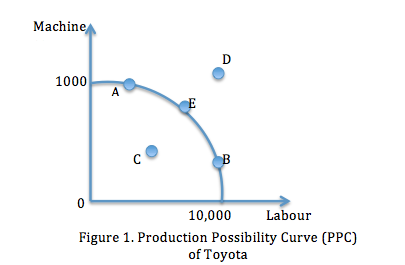
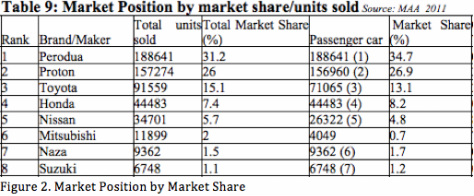

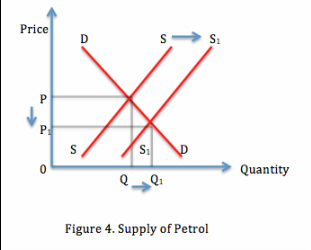
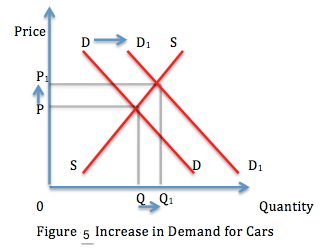
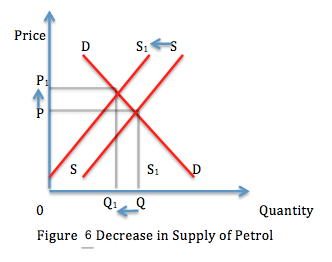
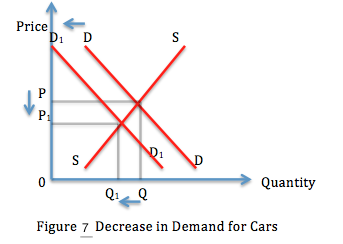
 RSS Feed
RSS Feed